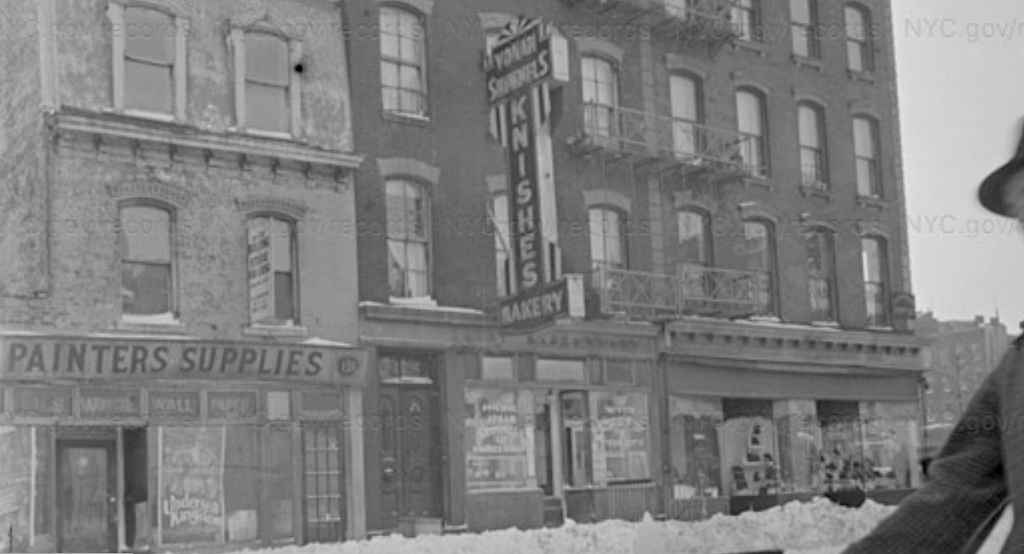Before Yonah Schimmel moved into an actual brick and mortar store on East Houston Street, he sold his knishes, reportedly made by his wife, from a pushcart.
“When Schimmel, a rabbi, left his native Romania for New York late in the 19th century, he had visions of becoming a teacher,” wrote Bill Morris in the New York Daily News in 2004.
But instead of joining the ranks of educators, Schimmel became part of the vast brigade of the city’s peddlers and vendors. He then opened a knish shop on East Houston with his cousin, states Sam Roberts in a 2010 New York Times article. The knishery relocated to its current site in 1910.
Schimmel left the knish business early on, wrote Roberts. He likely missed what was dubbed in 1916 the “knish war,” which involved a knish baker on nearby Rivington Street slashing his knish price from five to three cents, among other tactics, to undercut a rival knishery across the street.
Who knew the knish business was so cutthroat?
Now there are no rival knish bakeries; Yonah Schimmel’s is the only one left on the Lower East Side. (Yonah Schimmel has even outlasted Mrs. Stahl’s knishes in Brighton Beach, which closed in 2005.)
Schimmel’s namesake knishery continues to turn out doughy pillows of potato and kasha that go from the oven to an ancient display case. The store signage remains charmingly frozen in time.
Images of the shop reveal how little has changed, despite the transformation of so much of East Houston Street—once a Jewish immigrant main drag that became a trendy nightlife destination in the 1990s and early 2000s.
In the second photo, from about 1940, there’s a vertical knish sign—how wonderful if it managed to survive and is in storage somewhere! But otherwise, the little shop’s windows and doorway, save for a ramp, appear the same.
Thirty-three years later, Hedy Pagremanski painted a robust view of Yonah Schimmel’s (third image) looking eerily as it does today.
Pagremanski depicts the current signage above the store (with it’s curious misspelling of Schimmel), a crowd of neighborhood folks, and signs of life in some of the tenement windows, like flower boxes and curtains. Instead of another tenement on the right, there’s just an empty lot—hardly an uncommon sight on the Lower East Side of the 1970s.
The last image shows the current Yonah Schimmel’s. Flanked by a featureless hotel on the right and a reflective glass box on the left (RIP Sunshine Cinema), the knishery comes off as a relic of a very different Manhattan. Which it is—and the city is better for it.
[Second image: NYC Department of Records & Information Services; third image: MCNY, 79.50]





